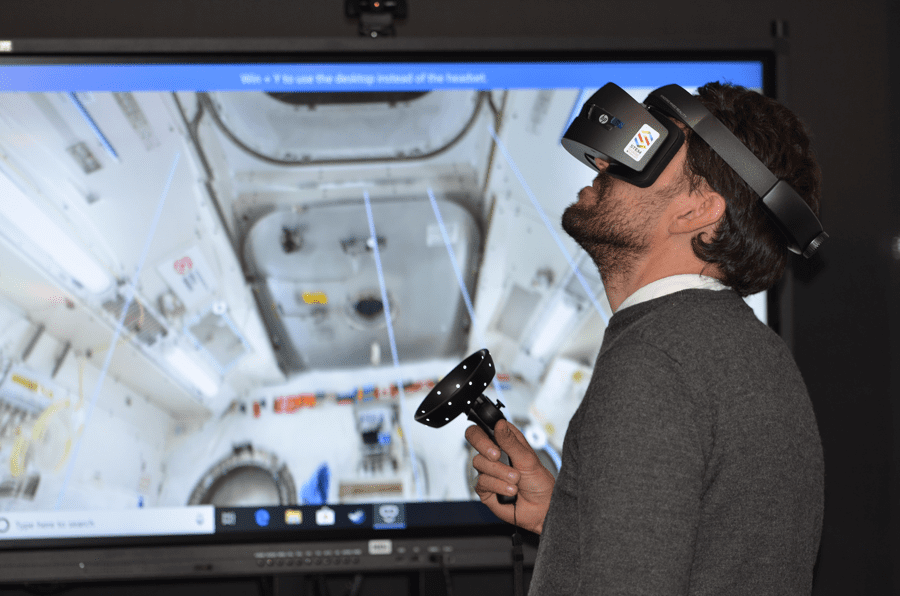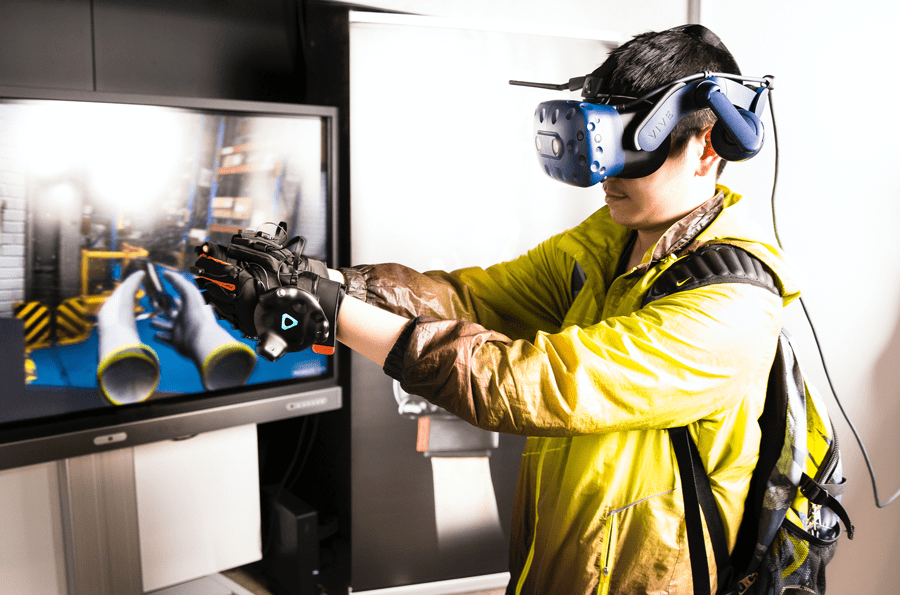The last ten years have been quite a rollercoaster ride for the oil and gas industry. This is especially true for those who are responsible for securing the labor needed to maintain efficient operations. Not only have there been major boom and bust cycles for the industry as a whole, but there have also been structural-demographic problems working against oil and gas recruiters, making hiring and training especially challenging.
Changes in the labor market have caused employers to look for more efficient ways to attract and onboard new employees. Additionally, employers are thinking more critically about how they cross-train and upskill their existing employees.
While there is a cohort of experienced oil and gas engineers, technicians and equipment operators that have accrued decades of hands-on knowledge, many are retiring or planning to retire over the coming decade. Their wealth of knowledge is not easily taught in a classroom. Virtual Reality training solutions like those offered by Oberon Technologies® are capturing tribal knowledge into virtual scenarios and enabling faster onboarding, higher levels of training retention, and providing innovative ways to recruit younger staff.
The fully immersive VR environments allow employers to effectively screen candidates for challenging and complex roles. VR experiences allow employers to gauge performance when faced with real-world scenarios, both tactically and emotionally. In hours, employees can experience what may take years for them to come across in the field, helping them be more prepared for the job in the real world.
Job Training Challenges in the Oil and Gas Industry
For the oil and gas sector, getting new employees up to speed has been a major cost burden for as long as employers can remember. According to the Society for Human Resource Management, for all industries, the cost of training a new employee – independent of industry – is estimated at approximately $4,125. Within the oil and gas sector, that is significantly higher, especially for roles that involve working in extreme weather conditions, with heavy machinery, at great heights, with high voltage equipment, at increased risk for exhaustion and fatigue, as well as fire, explosion and more.
Much of the cost of job training comes specifically from the time spent doing the training, but there are many other costs that are not so obvious, like the additional costs associated with ineffective methods, resulting labor turnover, damaged equipment, neglected hazards, and a need to spend time re-training employees.
This is especially true for the highly technical roles commonly seen on oil rigs, around oil wells, in pipeline maintenance, and in other roles in the industry. The result is the training can be slow, risky and often ties up more experienced employees.
By accelerating the speed of training, employers can save money by maximizing production capacity and minimizing non-productive hours. By increasing the efficacy of the training, oil and gas firms can reduce the odds of costly human errors and ensure a higher rate of knowledge retention.
How Virtual Reality Job Training is Superior to Legacy Training Techniques
Virtual Reality allows employers to evaluate trainees’ ability to perform specific tasks in specific environments. For example, a rig operator trainee can learn protocol to deal with an unexpected explosion, or a pipeline technician trainee can train on inspecting a specific part of a pipeline thousands of miles away. Knowing your employees’ capabilities before they are put into a real-world situation allows for better understanding of where additional time needs to be spent to minimize the skills gaps and critical errors caused by lack of experience.
The data also corroborates what we have seen from employers who adopt VR training technology. A recent 2020 PWC study shows that employees completed VR programs four times faster than in-person training and 1.5 times faster than e-learning. In addition, VR training results in learning retention rates of up to 80 percent one year after training, compared to 20 percent just one week after traditional training.
We like to think of this from the perspective of astronauts and airplane pilots. They have been training through direct simulation such as flight simulators for decades, largely because of the risk and difficulty level of the work for new trainees. As an immersive simulation, VR training is not all that different. It’s now much more accessible for a wide variety of scenarios and environments than it ever was in the past.

Specific Training Benefits Unique to VR
- Locational Awareness: VR provides opportunities for trainees to acquaint themselves with a work environment before they are ever on location. Someone who has never visited an oil facility before can learn their way around before ever setting foot inside one and avoid stepping into a hazardous environment that may not be conducive to training, before they are ready.
- Knowledge Transfer: VR can help bridge generational skill gaps that are common in the oil and gas industry. VR not only is an enticing recruiting tool for prospective employers, it can help directly bridge the knowledge gap by using scenarios provided by the skilled workers to show trainees exactly how critical tasks have been performed by veterans in the industry.
- Recording and Playback: Nothing is more important for quick and effective learning than effective feedback. Because the training takes place in a digital environment, each session can be recorded and replayed later for analysis and feedback, which help trainees learn from their mistakes much quicker, while trainers can evaluate performance in a way that directly reflects the actual work itself. Analytics can be run against the captured data to identify trends and areas needing more attention.
- Hazardous Scenario Simulation: VR allows trainers to introduce simulations into the training that would be impractical or dangerous for a trainee. VR provides important hands-on experience without the risk and costs associated with real-world learning. Thus, oil and gas workers can be exposed to a wider range of learning situations, and training can be adapted to unique risk factors.
- Unlimited Use: Once a VR environment has been created, it can be used and reused on an almost limitless basis, greatly extending the potential for training and knowledge acquisition, while at the same time reducing the time and cost of off-site training.
- Enhanced Proficiency Training: VR allows engineers to undertake proficiency training just prior to entering a work site, with details that match the actual environment they will be working in.
- Improved Engagement: VR fully engages the senses, preventing an employee from being distracted by outside influences and thus maximizing learning engagement and retention.
Typical Use Cases:
- New employee onboarding
- Facility and working environment familiarization
- Equipment location and identification
- Emotional evaluation (testing for fear of heights, claustrophobia, motion sickness, etc.)
- Standard operating procedures
- Advanced skills training
- Hazard identification
- Inspection procedures
- Maintenance procedures
- Safety procedures
- Compliance training
- Skills and environment screening.
Photos courtesy of Unsplash.
Tim Allen is CEO and co-founder of Oberon Technologies, a leading provider of innovative extended reality (XR) training and information delivery technologies. With over 27 years of experience architecting, implementing and optimizing content solutions for global organizations, his expertise spans the entire content lifecycle from creation through management and delivery. Providing solutions and support for hundreds of industry-leading organizations, Allen executed every facet of providing innovative content solutions including defining a strategy, data modeling, translations, taxonomies, content management, workflow and dynamic multi-channel information delivery.
Oil and gas operations are commonly found in remote locations far from company headquarters. Now, it's possible to monitor pump operations, collate and analyze seismic data, and track employees around the world from almost anywhere. Whether employees are in the office or in the field, the internet and related applications enable a greater multidirectional flow of information – and control – than ever before.




